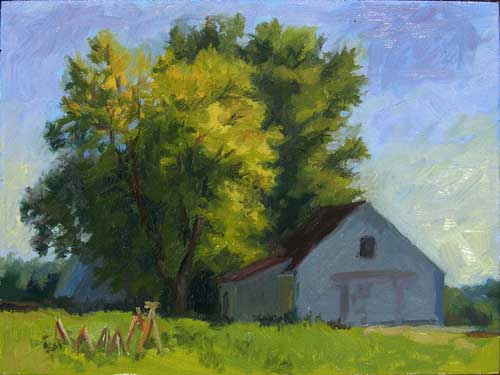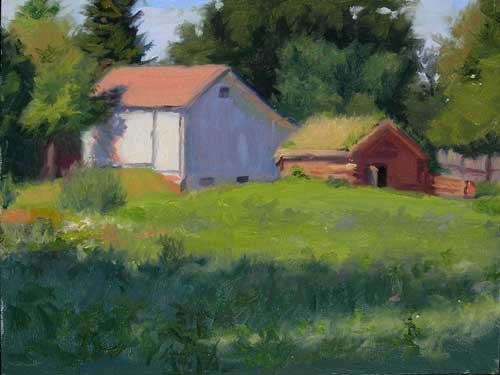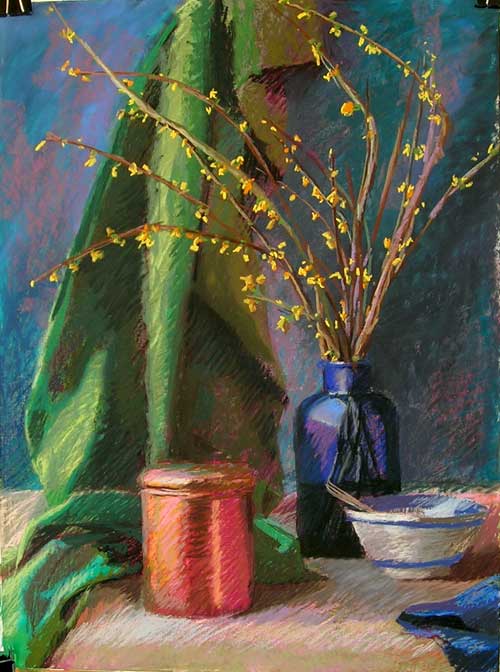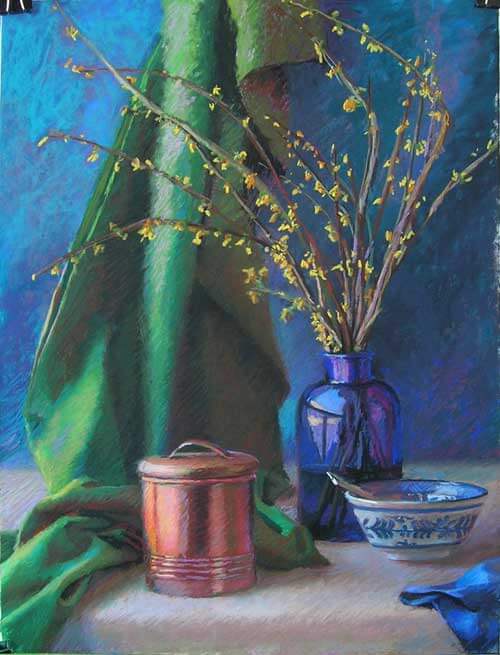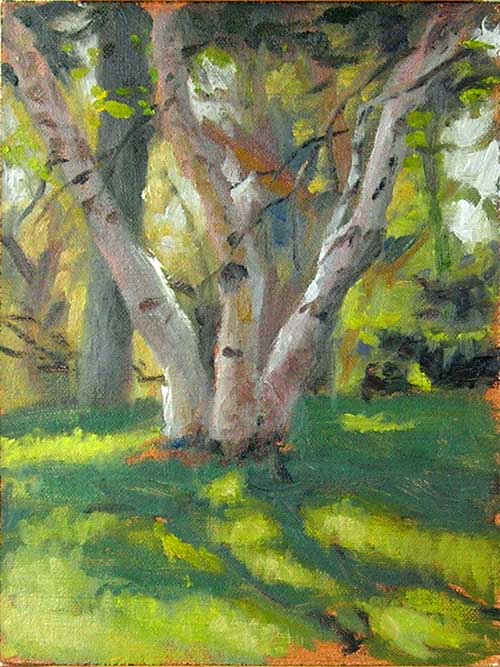Plein Air Plan | 5 tips for better outdoor painting
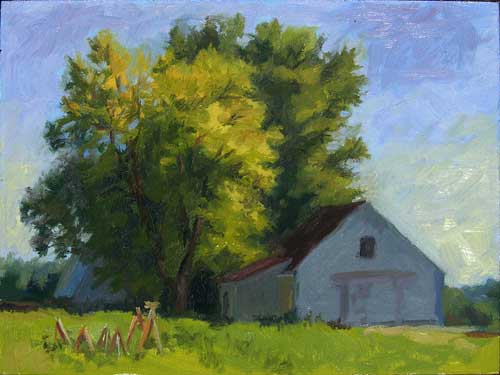
I was going through an old sketchbook and found the notes from a fantastic plein air painting workshop through The Atelier in Minneapolis. The workshop was taught by plein air artist, Brian Stewart.
In gearing myself up mentally for that workshop, I had set an intention to use this opportunity to learn as much as I could about another painter’s process for working plein air — painting outdoors, directly from nature.
5 things I learned
- Location, location, location. Choosing what to paint is just as, if not more important than, how you paint it. Don’t be in a rush. There is beauty everywhere, but you need to have an idea of why you have chosen a scene and what you are trying to convey.
- Compose it well. How you place that well-chosen subject on the canvas is critical. The emotion that a viewer feels or doesn’t feel when they look at your painting has a lot to do with how things are arranged.
- Draw it out. Take the time to draw out your painting. This should be done simply but as accurately as possible. Use a few lines, no more than 7 or 8 if possible. Starting with nothing or, even worse, starting with something sloppy on the canvas, just means that you will be spending your time later fixing what you just put down.
- Values rule. Once the drawing has been established and you are starting out on a painting, there is nothing more important than getting your values right. “How light is the shadow side of this shape compared to the light side of this other shape?” Move from shape to shape comparing and ask yourself how each shape related to the others.
- Explain yourself. There reaches a point in a plein air painting where you need to stop simply putting down paint and start describing the feeling of what you see in front of you. This is done through edges, brush strokes, color/temperature variations, and value shifts. “How can I manipulate the paint to give the viewer a better idea of what I experienced?”
What struck me while I was painting is how these ideas could be applied to almost any representational painting done from life. There is nothing radical. No secret colors or recipes for mixing up the perfect colors to use for painting the shadow side of oak trees. Just slow down, compare the parts to the whole, and paint what you see.

